-
 Bitcoin
Bitcoin $106,731.2224
-1.05% -
 Ethereum
Ethereum $2,444.9804
-1.20% -
 Tether USDt
Tether USDt $1.0003
0.01% -
 XRP
XRP $2.1882
0.09% -
 BNB
BNB $651.1435
-0.61% -
 Solana
Solana $148.3252
-2.09% -
 USDC
USDC $1.0000
0.01% -
 TRON
TRON $0.2787
0.55% -
 Dogecoin
Dogecoin $0.1598
-3.16% -
 Cardano
Cardano $0.5520
-2.43% -
 Hyperliquid
Hyperliquid $39.0960
-2.64% -
 Bitcoin Cash
Bitcoin Cash $516.9519
2.98% -
 Sui
Sui $2.7011
-2.95% -
 Chainlink
Chainlink $13.0582
-1.71% -
 UNUS SED LEO
UNUS SED LEO $8.9250
-2.53% -
 Stellar
Stellar $0.2359
-0.18% -
 Avalanche
Avalanche $17.3856
-3.73% -
 Toncoin
Toncoin $2.8095
-3.56% -
 Shiba Inu
Shiba Inu $0.0...01121
-1.95% -
 Litecoin
Litecoin $85.2795
-0.85% -
 Hedera
Hedera $0.1471
-2.15% -
 Monero
Monero $319.8004
1.12% -
 Dai
Dai $1.0001
0.01% -
 Ethena USDe
Ethena USDe $1.0001
0.02% -
 Bitget Token
Bitget Token $4.5344
-1.07% -
 Polkadot
Polkadot $3.3224
-2.96% -
 Uniswap
Uniswap $6.9697
-2.75% -
 Aave
Aave $266.1658
-2.25% -
 Pepe
Pepe $0.0...09414
-3.41% -
 Pi
Pi $0.4913
-3.29%
How to use conditional orders on HTX?
HTX's conditional orders automate trading by executing trades at set conditions, enhancing efficiency in volatile markets; types include Limit, Stop-Limit, Stop-Market, and Trailing Stop.
Apr 06, 2025 at 04:35 am
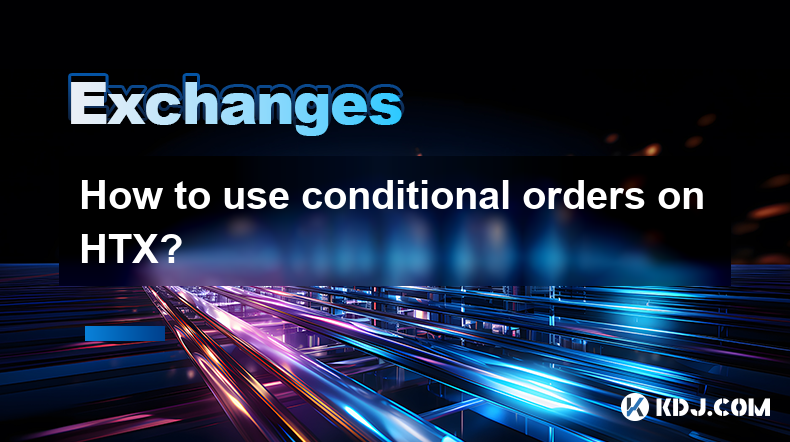
Understanding Conditional Orders on HTX
Conditional orders on HTX are a powerful tool for traders looking to automate their trading strategies. These orders allow you to set specific conditions under which a trade will be executed, without needing to monitor the market constantly. This can be particularly useful in volatile markets where quick reactions are necessary. By understanding and utilizing conditional orders, you can enhance your trading efficiency and potentially improve your trading outcomes.
Types of Conditional Orders on HTX
HTX supports several types of conditional orders, each serving a different purpose based on your trading strategy. The main types include:
- Limit Order: This order is executed at a specified price or better. You can set a buy limit order below the current market price or a sell limit order above it.
- Stop-Limit Order: This combines the features of a stop order and a limit order. Once the stop price is reached, a limit order is placed.
- Stop-Market Order: When the stop price is triggered, the order becomes a market order and is executed at the best available price.
- Trailing Stop Order: This order type allows you to set a trailing percentage or amount below the market price for a long position or above the market price for a short position.
Understanding these types will help you choose the right conditional order for your trading needs.
Setting Up a Conditional Order on HTX
To set up a conditional order on HTX, follow these detailed steps:
- Log into your HTX account: Ensure you are logged into your HTX account with sufficient funds for the trade.
- Navigate to the trading page: Go to the trading section of the platform and select the cryptocurrency pair you wish to trade.
- Select the order type: Click on the "Order" tab and choose the type of conditional order you want to set up (e.g., Limit, Stop-Limit, Stop-Market, or Trailing Stop).
- Enter the order details: Depending on the order type, you will need to input specific details:
- For a Limit Order, enter the price at which you want to buy or sell and the quantity.
- For a Stop-Limit Order, enter the stop price and the limit price, along with the quantity.
- For a Stop-Market Order, enter the stop price and the quantity.
- For a Trailing Stop Order, enter the trailing percentage or amount and the quantity.
- Review and submit the order: Double-check all the entered details to ensure they align with your trading strategy. Once satisfied, submit the order.
Managing and Monitoring Conditional Orders
Once your conditional order is placed, it's important to manage and monitor it effectively. Here are some tips:
- Regularly check your orders: Keep an eye on your active conditional orders to ensure they are still aligned with your trading goals.
- Adjust as needed: Market conditions can change rapidly, so be prepared to adjust your conditional orders if necessary. This might involve changing the stop price, limit price, or even canceling the order.
- Use HTX's notification features: HTX offers notification settings that can alert you when your conditional orders are triggered or filled. Make sure to set these up to stay informed.
Common Mistakes to Avoid with Conditional Orders
To maximize the effectiveness of conditional orders on HTX, it's crucial to avoid common pitfalls:
- Setting unrealistic prices: Ensure that your stop and limit prices are realistic and based on market analysis. Setting prices too far from the current market can result in orders that never get filled.
- Ignoring market volatility: High volatility can lead to rapid price movements that might trigger your conditional orders unexpectedly. Always consider the current market conditions when setting up your orders.
- Over-reliance on automation: While conditional orders can automate your trading, they should not replace your own market analysis and decision-making. Use them as a tool to enhance your strategy, not as a complete substitute.
Troubleshooting Common Issues with Conditional Orders
Sometimes, you might encounter issues with your conditional orders on HTX. Here are some common problems and how to address them:
- Order not executing: If your order is not executing, check if the conditions you set are being met. Also, ensure that there is sufficient liquidity in the market for your order size.
- Order partially filled: In cases where your order is only partially filled, you might need to decide whether to cancel the remaining part or adjust the order to increase the chances of full execution.
- Technical issues: If you suspect a technical problem, contact HTX customer support for assistance. They can help resolve issues related to the platform's functionality.
Frequently Asked Questions
Q: Can I set multiple conditional orders for the same cryptocurrency pair on HTX?
A: Yes, you can set multiple conditional orders for the same cryptocurrency pair on HTX. However, ensure that the conditions of these orders do not conflict with each other, as this could lead to unintended trading outcomes.
Q: How does HTX handle conditional orders during high market volatility?
A: During high market volatility, HTX's system is designed to handle conditional orders efficiently. However, rapid price movements can sometimes lead to orders being triggered unexpectedly. It's important to set realistic stop and limit prices and to monitor your orders closely during such periods.
Q: Are there any fees associated with using conditional orders on HTX?
A: HTX charges standard trading fees for executed orders, including those placed through conditional orders. There are no additional fees specifically for using conditional orders, but you should be aware of the trading fees that apply to your trades.
Q: Can I cancel a conditional order after it has been placed but before it is executed?
A: Yes, you can cancel a conditional order at any time before it is executed. Simply navigate to the "Orders" section on HTX, find the conditional order you wish to cancel, and select the cancel option.
Disclaimer:info@kdj.com
The information provided is not trading advice. kdj.com does not assume any responsibility for any investments made based on the information provided in this article. Cryptocurrencies are highly volatile and it is highly recommended that you invest with caution after thorough research!
If you believe that the content used on this website infringes your copyright, please contact us immediately (info@kdj.com) and we will delete it promptly.
- Cold Wallet, Token, Gains: Is CWT the Smartest Crypto Move?
- 2025-07-02 01:10:12
- Pi Coin's Rocky Ride: Support Levels, Recovery Timeline, and What the Experts Are Saying
- 2025-07-02 01:10:12
- Shiba Inu, Ozak AI, and Cryptocurrency: Navigating the Meme Coin Maze
- 2025-07-02 01:15:12
- Solana Meme Coin Mania: Trading Bots Take Center Stage
- 2025-07-02 01:15:12
- UniCredit, Bitcoin, and BlackRock ETF: A New Era of Crypto Investment?
- 2025-07-02 00:30:12
- UniCredit, Bitcoin ETF, and BlackRock: A New York Minute on Crypto's Big Players
- 2025-07-02 00:30:12
Related knowledge
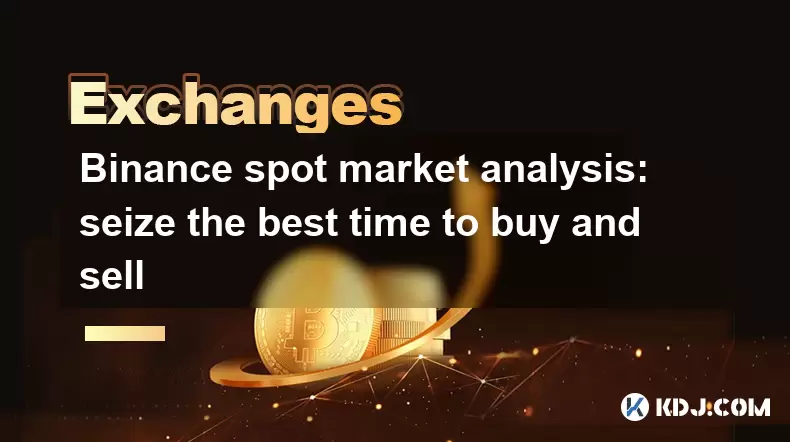
Binance spot market analysis: seize the best time to buy and sell
Jun 19,2025 at 04:56pm
Understanding the Binance Spot MarketThe Binance spot market is one of the most popular platforms for cryptocurrency trading globally. It allows users to trade digital assets at current market prices, making it essential for traders aiming to buy low and sell high. Unlike futures or margin trading, spot trading involves direct ownership of the asset aft...
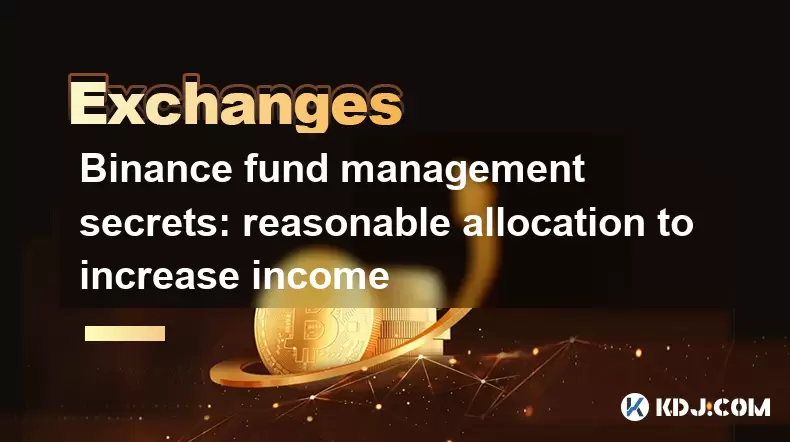
Binance fund management secrets: reasonable allocation to increase income
Jun 22,2025 at 02:29pm
Understanding Binance Fund ManagementBinance fund management involves strategic allocation of your cryptocurrency assets to optimize returns while managing risk. The key to successful fund management lies in understanding how different investment options on the Binance platform can be utilized to create a diversified portfolio. This includes spot tradin...
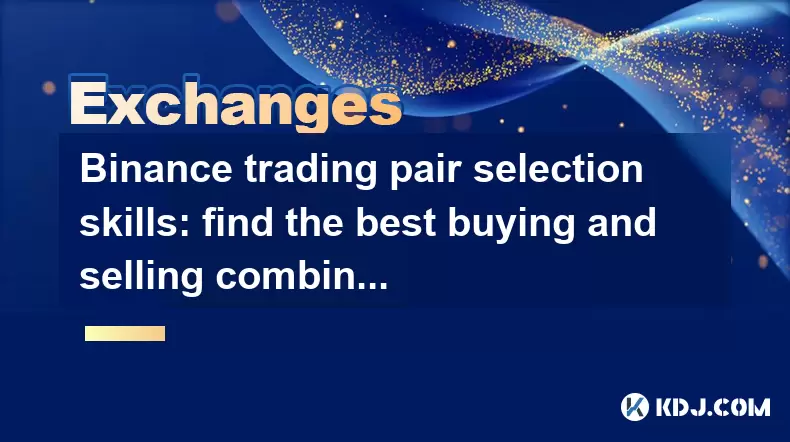
Binance trading pair selection skills: find the best buying and selling combination
Jun 23,2025 at 02:49am
Understanding the Basics of Trading Pairs on BinanceBefore diving into trading pair selection skills, it's essential to understand what a trading pair is. On Binance, a trading pair refers to two cryptocurrencies that can be traded against each other. For example, BTC/USDT means Bitcoin is being traded against Tether. Each trading pair has its own liqui...

Binance new coin mining strategy: participate in Launchpool to earn income
Jun 23,2025 at 11:56am
What is Binance Launchpool and how does it work?Binance Launchpool is a feature introduced by the world’s largest cryptocurrency exchange, Binance, to allow users to earn new tokens through staking. This platform enables users to stake their existing cryptocurrencies (such as BNB, BUSD, or other supported assets) in exchange for newly launched tokens. T...
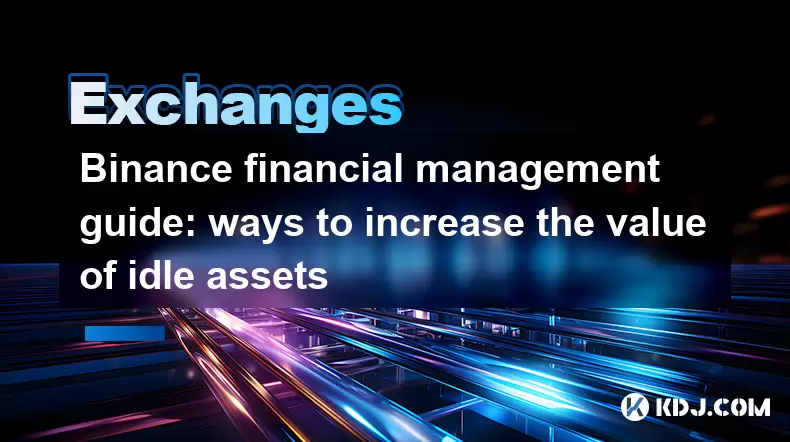
Binance financial management guide: ways to increase the value of idle assets
Jun 19,2025 at 11:22pm
Understanding Idle Assets in the Cryptocurrency SpaceIn the fast-paced world of cryptocurrency, idle assets refer to digital currencies that are not actively being used for trading, staking, or yield farming. Holding these funds in a wallet without utilizing them means missing out on potential growth opportunities. Binance, as one of the leading platfor...
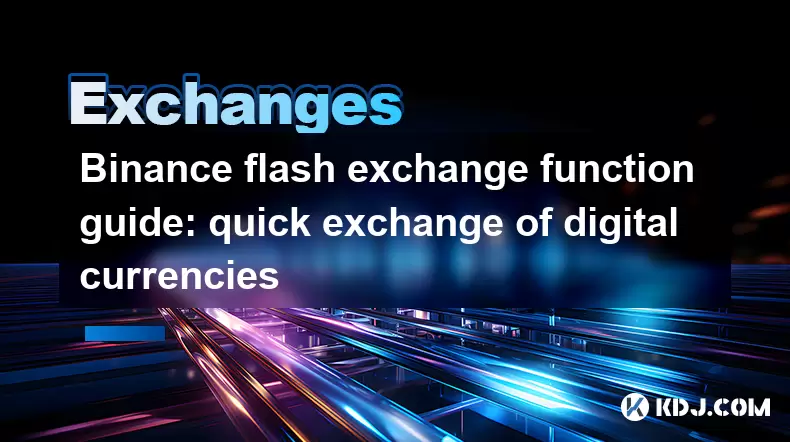
Binance flash exchange function guide: quick exchange of digital currencies
Jun 23,2025 at 12:29pm
What is the Binance Flash Exchange Function?The Binance Flash Exchange function is a powerful tool designed to allow users to instantly swap between supported cryptocurrencies without the need for placing traditional buy/sell orders. This feature simplifies the trading process by offering a direct exchange mechanism, eliminating the requirement to conve...

Binance spot market analysis: seize the best time to buy and sell
Jun 19,2025 at 04:56pm
Understanding the Binance Spot MarketThe Binance spot market is one of the most popular platforms for cryptocurrency trading globally. It allows users to trade digital assets at current market prices, making it essential for traders aiming to buy low and sell high. Unlike futures or margin trading, spot trading involves direct ownership of the asset aft...

Binance fund management secrets: reasonable allocation to increase income
Jun 22,2025 at 02:29pm
Understanding Binance Fund ManagementBinance fund management involves strategic allocation of your cryptocurrency assets to optimize returns while managing risk. The key to successful fund management lies in understanding how different investment options on the Binance platform can be utilized to create a diversified portfolio. This includes spot tradin...

Binance trading pair selection skills: find the best buying and selling combination
Jun 23,2025 at 02:49am
Understanding the Basics of Trading Pairs on BinanceBefore diving into trading pair selection skills, it's essential to understand what a trading pair is. On Binance, a trading pair refers to two cryptocurrencies that can be traded against each other. For example, BTC/USDT means Bitcoin is being traded against Tether. Each trading pair has its own liqui...

Binance new coin mining strategy: participate in Launchpool to earn income
Jun 23,2025 at 11:56am
What is Binance Launchpool and how does it work?Binance Launchpool is a feature introduced by the world’s largest cryptocurrency exchange, Binance, to allow users to earn new tokens through staking. This platform enables users to stake their existing cryptocurrencies (such as BNB, BUSD, or other supported assets) in exchange for newly launched tokens. T...

Binance financial management guide: ways to increase the value of idle assets
Jun 19,2025 at 11:22pm
Understanding Idle Assets in the Cryptocurrency SpaceIn the fast-paced world of cryptocurrency, idle assets refer to digital currencies that are not actively being used for trading, staking, or yield farming. Holding these funds in a wallet without utilizing them means missing out on potential growth opportunities. Binance, as one of the leading platfor...

Binance flash exchange function guide: quick exchange of digital currencies
Jun 23,2025 at 12:29pm
What is the Binance Flash Exchange Function?The Binance Flash Exchange function is a powerful tool designed to allow users to instantly swap between supported cryptocurrencies without the need for placing traditional buy/sell orders. This feature simplifies the trading process by offering a direct exchange mechanism, eliminating the requirement to conve...
See all articles

























































































